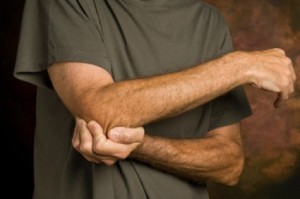Got a headache? Take a pill. Upset? Call a friend. Hurt or injured? Go to the emergency room. Sick? Call the doctor! Fearful? Talk yourself out of it, or run and hide. Sad? Bury it with work. Offended? Fight back! When the the pain comes up, so do our defenses. Our goal is to feel better as soon as possible. And what’s wrong with that? Right?
Then why do spiritual advisers and healing teachers admonish us instead to eschew these short-term avoidance tactics and instead to “feel it if you want to fix it” and to “go into the pain” and to fully experience your “charges” when they come up? Doesn’t that seem counterintuitive and hard on us?
And what, exactly, does it mean to fully experience your own pain? Weren’t you already feeling the pain, and isn’t that why you already took the pill?
Pain knocks at your door until you wake up and listen. We don’t want to listen. We are used to the Western “restorative” medical model of curing which seeks to quickly eliminate symptoms and go backward to a previous state before the symptoms appeared. However, whatever that state was, it did give rise to the symptoms. Do you we really want to go back there? A newer “reorganizational” model of healing seeks to go through the symptoms and forward to a new, improved state.
We aren’t talking about dismissing all medical approaches to serious, chronic, or emergency conditions. Western medicine excels at diagnosis, crisis management, and accidents. It controls chronic symptoms. It extends lives. It saves lives.
But research has shown that while palliative measures are great at getting us out of the emergency and back to the “usual,” they work far less well or consistently over the long term than we’d imagined. Recurrences, setbacks, persistence, and failures are more common than not.
Especially for lesser and more common disturbances, a symptomless life isn’t necessarily the only goal. At some point we want more than going back, we get tired of constantly eliminating and palliating. Sometimes that means putting up with and listening to the fever, the pain, and the emotions — without making them go away.
If you’re new to it, there’s learning and faith involved in listening to your body. It can be scary. As pains and negative emotions crop up in the next few days, apply the simple process of the three A’s: Awareness, Acknowledgement, Awakening.
Awareness: Your head hurts. You notice it. Pretty easy. (Although, again, you’d be surprised. Many people are so disconnected with themselves that they don’t always notice pain, especially psychological or chronic pain.) If this is all you do — become aware — it is a great first step to “being” with pain.
Acknowledgement: My head hurts every morning. My head hurts when I drink too much or eat certain foods. My head hurts when I’m confused about where I’m going in life. These are different levels of acknowledgment. You say them to yourself, or to others. They lead to Awakening.
Awakening: I have an increasing sense of both the cause-and-effect associated with my headache and its meanings. It is saying that I am ignoring my body’s messages; that I could be bringing more consciousness to what I’m avoiding and why; that I need to make some fundamental changes. Thank you, headache. I’m listening.
If you shut the pain up, and effectively keep it from talking to you, you don’t get the wisdom. You continue to drink and eat unconsciously; you fail to consider a more global condition that may be giving rise to your symptoms; you never feel badly enough to really enact change in your life. If you were an addict, you would call it bottoming out. But do you really want to bottom out before changing gears and looking for the root cause of your pain?
Next time a pain comes up, stop your first impulse to suppress it or shoot it up with cortisone. Go down the dimly lit stairs into the basement of your psyche. Ask your head or your elbow or your higher power a question: Why do I hurt? What do I want? Whatever thought occurs to you might contain an insight, a clue, a loving voice. Stay with it. Listen harder. Your body/mind is on your side. It has all the wisdom you seek. It taps you into a greater wisdom. Don’t worry if you don’t get “instant results.” You’ll get better at reading yourself. It’s a skill one learns from practicing.
Then take the pill. (Ha ha. Kidding.)
But, kidding aside, you may also be perfectly content with your current strategies. If so, stay that course. What we’re offering here is a “how” and a pathway to “being with pain” to connect with your innate wisdom. See how it goes. See where it goes.
- Freedom of feeling








Susan: Thank you so much for this interesting blog and concepts therein. There is certainly something to focusing, mindfulness, and ‘being’ with something, even pain as we imagine us coping with it and the messages within it. If anything there is a strong desensitization effect, as we are able to be present and can use imagery and revisualization techniques that helps us not only enhance coping, help us deal with something, and decrease sensitivity as we shift a focus to thinking about it an dhow to cope..Shifting focus from the pain to something else can also be learned, and the success of walking through it gives us the confidence to face it again.–TIM Kellebrew
Tim, Thanks for the thoughtful comment.